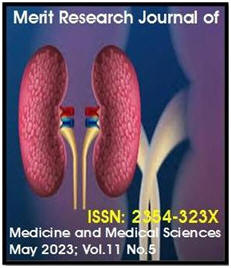
|
|
|
|
|
|
/ / MRJMMS Home / / About MRJMMS / / Submit Manuscripts / / Call For Articles / / Editorial Board / / Archive / / Author's Guide / /
|
Other viewing option
• Full text •Reprint (PDF) (232 KB)
Deguenon
AY
|
Original Research Article Assessment of Lead and Cadmium Concentration in Liver and Kidney of Sprague Dawley Rats Exposed to Cultured Vernonia amygdalina Leaves |
|||
|
Adjouavi Yvette DEGUENON1*, Bernadin Manou ELEGBEDE2, Martin Pépin AINA1 |
||||
|
1National Water
Institute/Laboratory of Science of Water and Environmental
Engineering/University of Abomey-Calavi (UAC) |
||||
|
Abstract |
||||
|
Lead and cadmium
are among the heavy metals whose presence is feared because of
their toxicity. They enter the food chain by consuming plants
harvested from contaminated sites. In this study, we subjected
Sprague Dwaley rats to a 14-day chronic exposure to extracts of
Vernonia amygdalina leaves contaminated with different
concentrations of lead and cadmium solutions. The rats were
sacrificed and the liver and kidneys organs were removed. All
the samples were determined by flame atomic absorption
spectrophotometry. The results showed that the concentrations
contained in the administered extracts are 0.26ppm; 3.662ppm;
4.878ppm; 5.47ppm for lead on the one hand and 0.046ppm;
1.773ppm; 6.26ppm; 30.55ppm for cadmium on the other hand. Rats
in the control lot received distilled water. The different
bioaccumulated concentrations in the kidneys are in the order of
0.02ppm; 0.06ppm; 0.17ppm; 0.28ppm; 0.59ppm for lead and
0.06ppm; 0.06ppm; 0.51ppm; 0.64ppm; 0.78ppm for cadmium. In the
liver the following concentrations were accumulated 0.02ppm;
0.06ppm; 0.22ppm; 0.24ppm; 0.42ppm for lead and 0.04ppm;
0.10ppm; 0.15ppm; 0.35ppm; 0.45ppm for cadmium. Considering a
longer exposure period, the bioaccumulated concentrations will
be higher because circulating concentrations have not been
measured. The bioaccumulative nature of these metals in the
liver and kidney is important in assessing the risks associated
with the consumption of products contaminated with lead and
cadmium. |
Merit Research Journals© 2023 || Advertisement | Privacy policy.
